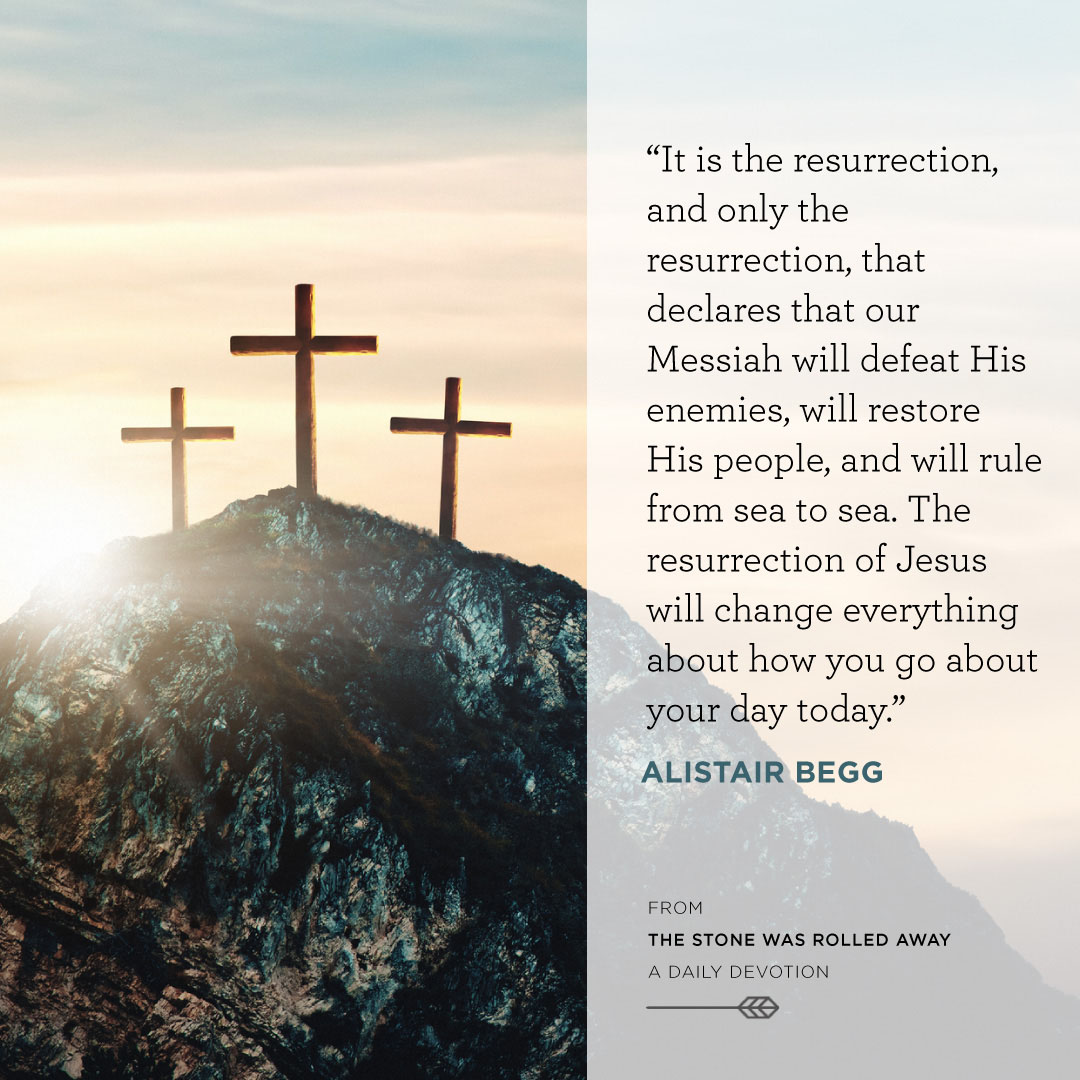The Man on the Middle Cross: A 7-Day Easter Reading Planنموونە

THE STONE WAS ROLLED AWAY
“Why do you seek the living among the dead? He is not here, but has risen.” LUKE 24:5-6 (ESV)
When we consider Jesus as Messiah, most of us think immediately in personal terms: Jesus is my Messiah. He forgives my sins. He lives in me. All of which, of course, is true. But 1st-century Jewish expectations concerning the messiahship of Jesus were far broader than that. If we had talked with a 1st-century Jew about his or her messianic expectations, we would have discovered hopes that were, in a sense, far grander in scope.
The Jews anticipated that their long-awaited Messiah would come to defeat the pagans who held sway over them, rebuild the temple, and establish God’s just rule upon the earth. Theirs was a nationalistic hope that the Messiah would come and vindicate the nation of Israel. Jesus’ arrival, with the miracles He performed, the stories He told, and the prophecies He fulfilled, built a great crescendo of expectation among His followers. But just when they began to think that He really would be the one to politically redeem the people of Israel, they saw all their messianic hopes hanging up on a Roman gibbet at Calvary. And when Jesus cried out, “It is finished” (John 19:30), many of them must have agreed.
How, then, did this group of believers, whose messianic hopes had been buried in a Palestinian tomb, not only continue to believe that Jesus was the Messiah but stand in the streets near where He had been executed and make an unashamed declaration of His messiahship? The answer which comes reverberating through the pages of the New Testament is found in the bodily resurrection of Jesus. The angelic announcement to the women who had brought spices to embalm a corpse provoked a radical reassessment of what the believers had witnessed on the Friday and a complete change in their view of their lives and futures. When the Messiah reappeared among them, as alive as ever, these previously sad, sorrowful, defeated, and brokenhearted disciples were transformed into bold, joyful witnesses. They now bore testimony to the reality of Christ resurrected with a body that could be seen, handled, and touched, and yet possessing capacities to do what His pre-resurrection body had not done. His work of salvation was finished; His life and His reign were most certainly not!
Only in the disciples’ recognition of His risen presence did Christ’s messiahship finally make sense. Indeed, what the early Jewish believers discovered when they “found the stone rolled away from the tomb” (Luke 24:2) and saw that “Jesus himself stood among them” (v 36) was that eternal hope, joy, and power ignited within their hearts. And these remain available to all who put their trust in Jesus, the resurrected Messiah. The resurrection and only the resurrection changes sadness, sorrow, and defeat into hope, joy, and power. It is the resurrection, and only the resurrection, that declares that our Messiah will defeat His enemies, restore His people, and rule from sea to sea. The resurrection of Jesus will change everything about how you go about your day today.
- How is God calling me to think differently?
- How is God reordering my heart’s affections—what I love?
- What is God calling me to do as I go about my day today?
We adapted this Plan from another resource. Learn More about Truth For Life and Alistair Begg.

Scripture
About this Plan

Nearly everyone agrees that this world is broken. But what if there’s a solution? This seven-day Easter plan begins with the unique experience of the thief on the cross and considers why the only real answer to brokenness is found in the execution of an innocent man: Jesus, the Son of God.
More
پلانە پەیوەستەکان

Discover the Gospel of Mark in 3 Weeks

Church & Students

7 Days of Powerful Prayer and Fasting

The BEMA Podcast: Session 1

Good Faith

I Can and I Will Through God’s Power - 7 Ways to Live Boldly for Christ by Ayub Paul

Charis Bible College Fall Bible Reading Plan

Leading Well: 5 Choices for Christian Leaders a 5 - Day Plan by Michele C. Walker, Ph.D.

Gratitude
